
Reviewer: Tim Smith
Financial interests: click here
Source (digital): 2 TB iMac 27” quad-core with 16GB RAM, AIFF, iTunes, streamed to Apple Airport Express; Musical Paradise D-1; MHDT Labs Paradisea+; Maverick Audio Tube Magic D1; Marantz SA-8003 and SA-15S2 Limited Edition SACD players; Marantz CD5003 and 5004 as transport; Resonessence Labs Herus
Source (analog): Pro-Ject RPM 10.1 with Dynavector 10x5
Phono preamplifier: Graham Slee Era Gold Mk V
Preamplifier: Audio Research LS17
Amplifiers: FirstWatt F5; Line Magnetic 518IA; Wyred4Sound SX-1000 monos; Musical Paradise MP 301MkII and mk3 Deluxe; Coincident Dynamo SE; Bottlehead Crack DIY amplifier, Musical Paradise MP-303
Loudspeakers: Harbeth Compact 7-ES3; Tekton Design M-Lore; Magnepan 1.7; Mordaunt Short Carnival 2; DIY with Fostex FE 103; Pioneer SP-BS41-LR
Headphones: Beyerdynamic DT 770 (32 Ohm) and DT 880 (600 Ohm); HiFiMan HE-400 with Audio Sensibility Impact SE 7N OCC cables
Cables: Audio Sensibility Impact SE; DH-Labs Q-10; Connex/DH Labs BL-Ag; Kimber Kable 4TC, PBJ; Paul Speltz Anti-Cables; Canare; Cardas; QED; Connex/DH Labs power cords; Shunyata Research Venom HC
Power conditioning: Shunyata Research Venom PS8 with Venom Defender; Emotiva CMX-2
Equipment rack: Apollo, Target, Tableau
Isolation devices: Cardas blocks; Teo Audio-supplied 'earthquake foam'
Speaker stands: Skylan
Room size: 8.5 meters long with nook at each end; 3.3 meters wide; 2.1 meters high
Review component retail in USA: $1'499
'Anything you can do I can do better; I can do anything better than you' wrote Irving Berlin for the 1946 Broadway show Annie Get Your Gun. This is the implicit message of audio designers who launch a 'mark 2' version less than two years after the initial offering, sometimes to the chagrin of the purchasers of the original. When Israel Blume emailed 6moons to ask if I would be interested to follow up my September 2014 review of his $1'299 Coincident Dynamo 34SE with a comparison to the new $1499 Dynamo MkII, I was surprised. I'd thought the original was a fabulous amplifier punching well above its weight in just about every category. If it ain't broke, don't fix it. Having engaged in an obsessive buying binge of ChiFi push-pull and SEP amps from 2010-2014, I thought that the Dynamo was possibly without peer at its price. Accordingly, I'd bought the amp which since 2014 has acted as the solid anchor of my second system adding weight, warmth and drive to every small bookshelf speaker I paired it with. If the Dynamo had more than one input and remote control, I'd be tempted to sell more expensive gear and use it as my main amplifier with high-efficiency speakers. What could the MkII offer which the original amplifier had not?

As it turns out, a great deal. Your additional $200 buy an extra 4.5 kilos or 10 pounds of transformer iron, bigger and better capacitors, a shorter signal path, better grounding and several other upgrades. This 15kg amp is to the single-ended pentode EL34 amp family what the 45kg Mastersound amps are to the single-ended triode 845 genre. With their over-spec'd transformers bulging from their cases, these products surprise with their ability to manhandle complex music.
With substantially larger irons, the Dynamo MkII is not simply more of the same. It's like going from the Prologue to the Dialogue series in the Primaluna product range. They are worlds apart. Capacitance goes up 50% for more headroom and deeper bass - not just drier and deeper bass but noticeably more dimensional and on certain recordings, it must be said, a touch of bloat. Sonically this is the only weakness but entirely expected of a SEP amp. Ten extra pounds of iron won't overcome the typology's limitations. But with each passing year it seems that the gap between tube and transistor amps narrows and the MkII is clear proof. With voltage capacity increased by 40% and a shorter signal path, there should be more incisiveness and certainly is. Guitars pierce the air just a little bit more. The MkII seems a bit faster, better able to keep up with techno beats, better able to track dynamic swings with orchestral music and heavily produced rock. I was thoroughly satisfied with the way the Dynamo MkII handled "Dark Side of the Moon". it was noticeably more propulsive than the MkI and rendered the clock bells on "Time" with a touch more depth and body. Micro detail emerged from a quieter background. This amp strove for a different sonic signature.
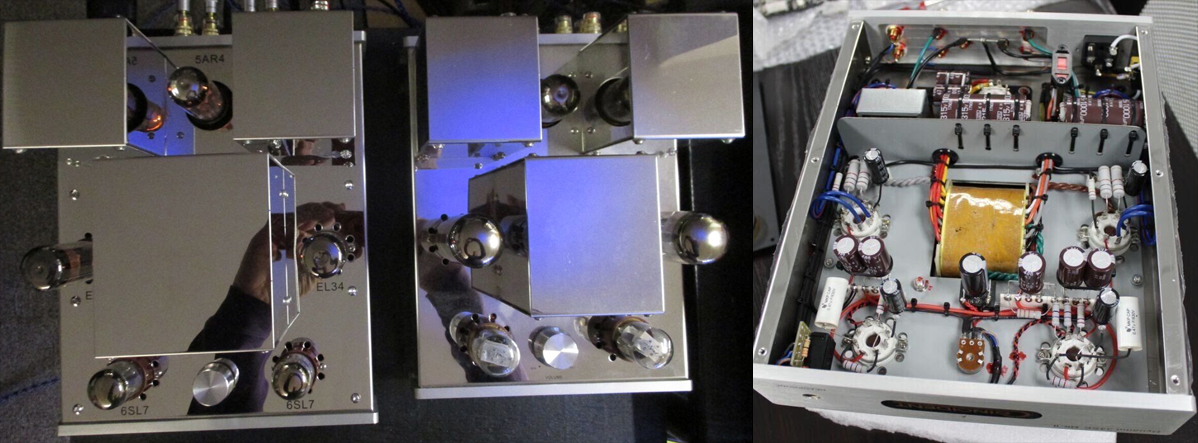
In this regard the owners of the original Dynamo can rest with the knowledge that they are not living with a trial run. They are living with a warmer more romantic sound, a less angular amp, a different taste for a different market, a different ear. The Mk1 was all about the dense and meaty midrange. The MkII is more balanced, more clear, sometimes bold and brash. Frankly the differences are such that a total name change would not have been out of order. If others agree that this is a different sort of amp, the initial investment and secondary market value of Mk1 purchasers is probably safe. In any case, the single greatest improvement lies in the noise floor. It drops to the point where I heard no hiss or hum from 95dB sensitive speakers when seated one meter away. The transformers are dead quiet, emitting no mechanical hum. The MkII is probably as quiet as the fabulous Almarro A205MkII I once owned, which was the quietest of the two dozen single-ended amps I have had in the house. It takes one hour before the Dynamo MkII's transformers become noticeably warmer than the ambient air. Sometimes three hours are required before they are hot and they never become uncomfortably so. This may indicate the potential for a long life span. The icing on the cake is that the Dynamo's headphone section is night and day quieter than the Almarro's noisy afterthought.
The second most important change to my ears concerns the bass. The Dynamo MkII's deeper bass shifts the sonic center of gravity away from the dense midrange emphasis of the MkI towards a wider bandwidth nearly solid-state in character. There's clarity to complex music one wouldn't normally expect from an 8wpc single ended pentode amplifier. There seems to be no congestion even with darker speakers never accused of being speed demons like my Harbeth Compact 7 ES-3s. With well-recorded electric bass, this amp has no trouble coaxing dry, gripping notes from my Compact 7s. I noticed this with Chris Squire's electric bass on "Roundabout" and Tony Levin's chapman stick on King Crimson's later works. I did find however, that sometimes there was too much of a good thing. With Randy Meisner and Paul McCartney's bass, there was obvious bloat. It's present in the original recording and other amps in my stable will reveal it but somehow with the Dynamo MkII, it seemed slightly accentuated as though the amp was trying for a missing sixth gear.
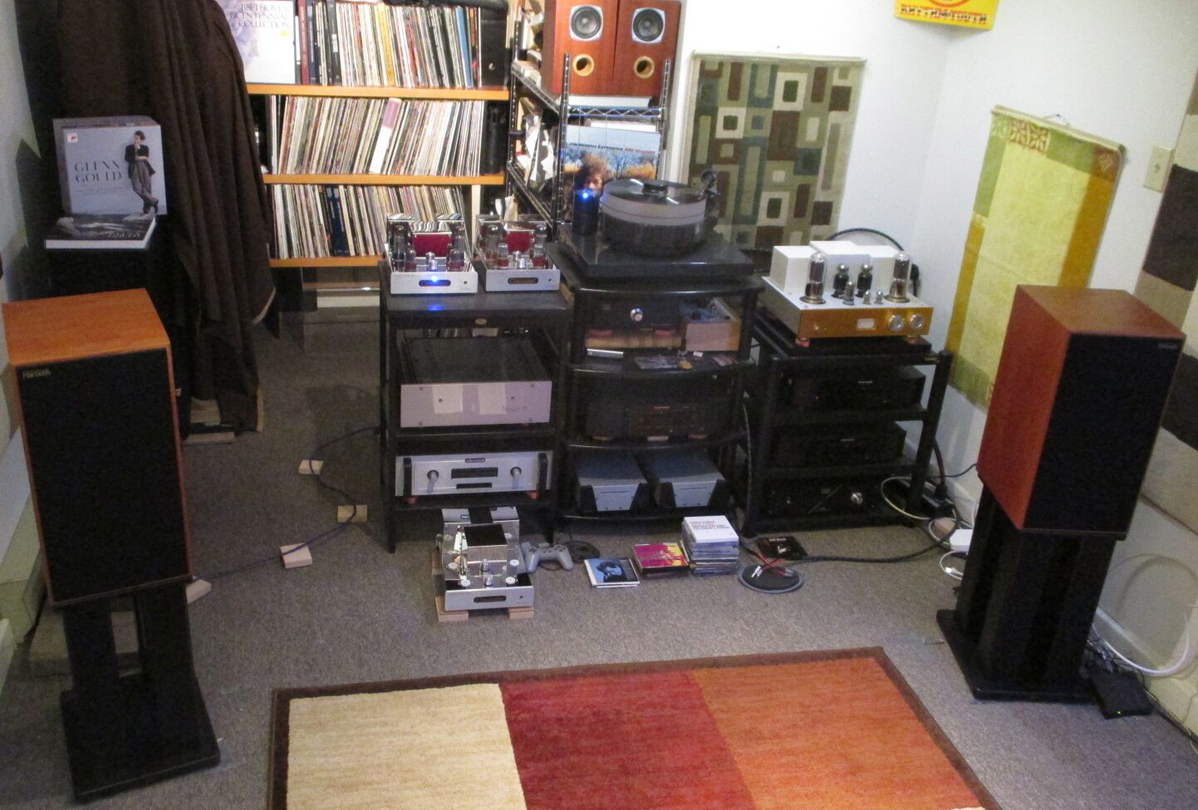
Having said that, most people will probably prefer this MkII because most people just want one good all-rounder amplifier. To my ears the MkII achieves this because it is generally superior to the MkI with demanding classical and rock music and more accurate with Jazz. The MkII has more transparency, more resolving power, more low-end grunt and more high-frequency detail retrieval. It's a 20x loupe versus a 10x loupe. There's certainly more of it. The MkII is less obviously euphonic and remarkably more solid-state sounding. Where the MkI was warm, rich and dense and sometimes stout, the MkII is a pale ale with a bit of bite. The effect is similar to using KT88 in an EL34 circuit capable of handling both. There's more snap and bite, more clarity, less romance. As with the original Dynamo, the MkII has an auto-bias circuit. I asked if I could use 6L6s but Israel Blume did not recommend it. You're stuck with EL34.
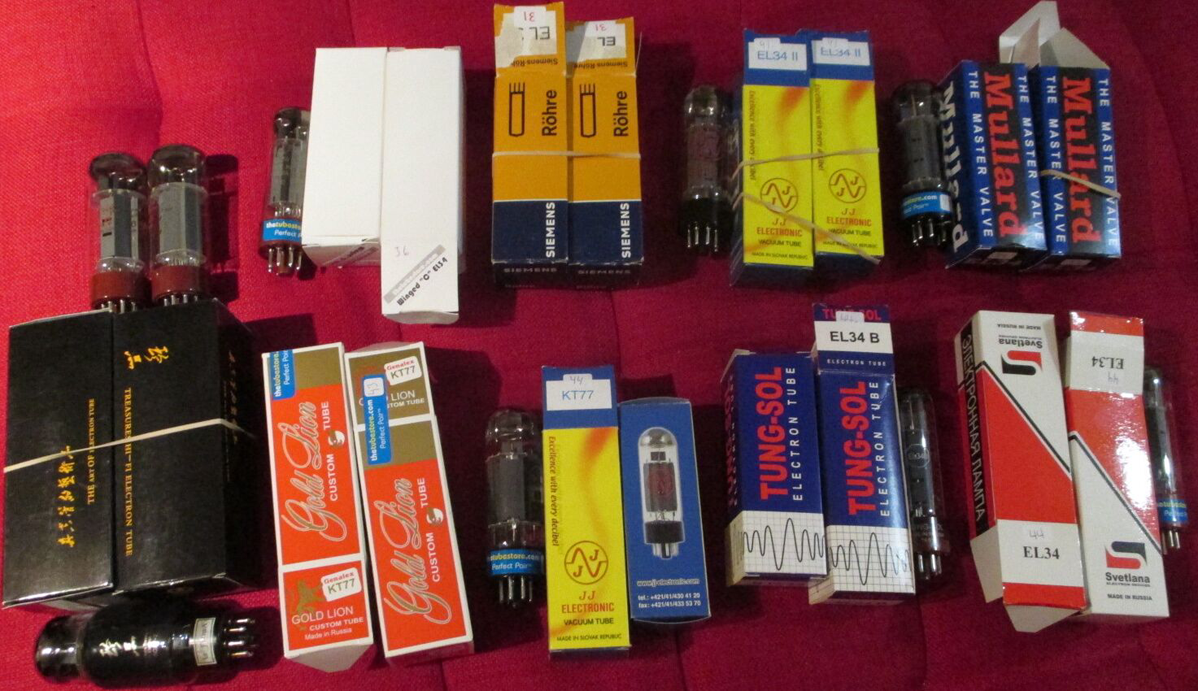
There are worse output tubes to be stuck with. Behold this embarrassment of riches, one part my personal stash, one part on loan from thetubestore.com for a tube review on another website. The Dynamo sounds good with all current production EL34 including, to my surprise, inexpensive JJ and Svetlana. They commit no obvious errors. If you want to add a bit more warmth to the Dynamo MkII and pull it back towards its little brother's sonic signature, go with new production Mullard or the wonderful Tung-Sol EL34B, a tube that easily earns my vote for the best-value EL34 in production today. If you want the crispest possible bass, go with the Shuguang black bottles. If you are a guitar-toting tone freak, the SED Winged C (now out of production) is for you. If you want the tube that does it all, with majestic soaring highs and window-rattling lows, search no further than the Gold Lion KT-77. The hype surrounding it is well deserved. It seems like the perfect tube for the Dynamo. It is fast and capable of turning on a dime but is also super quiet—quieter than the coated Shuguang black bottles that rattle for several minutes upon start up—and therefore it shocks with its ability to sort out the highest highs and lowest lows in the blink of an eye.
‘My life is full of romance.' Well, perhaps not, but it was precisely at the moment Rick Davies' words from "Lover Boy" floated past me that the Dynamo revealed its secret sauce. I saw the light. And quite literally for the tune was suddenly lit up like a flash of radiant clarity, with a sudden shift from the soaring highs of Davies' keyboard to the piercing lows of Dougie Thomson's bass. Yes, I had turned to that old chestnut LP of Prog Rock, "Even in the Quietest Moments," originally to see how the Dynamo would deal with Roger Hodgson‘s bright acoustic guitar at the opening of "Give a Little Bit." And the answer was just as I had expected. I'd had the amp in house for a few weeks, long enough to know that it is lit up and revealing but rarely grating. This is the magic of this little amp: its ability to juggle soaring highs and rumbling lows simultaneously and without congestion at reasonably loud levels. Normally you'd need a couple dozen more Benjamin Franklins or c-notes to achieve this effect. Howard Keel sang to Betty Hutton, 'any note you can hold I can hold longer.' The MkII certainly does this with a greater sense of ambience and air than the MkI, capturing the dying gasps of Steinway decays. The original Dynamo was no slouch where layering and instrument separation are concerned but the MkII sorts out all the lines of a tune with more ease. On Sad Café there's Glenn Frey's synthesizer on stage left, Timothy B. Schmit's bass nearby, in the back there's Henley's routine time keeping punctuated by noticeably more palpable cymbal strikes and off to the right there's a duo of Felder and Walsh playing off one another. On Kylie Minogue's "On the Dancefloor", the normally faint synth line is with lesser amps drowned out by the driving bass beat but now, with the MkII, eureka there it is. Again, objectively speaking, if detail retrieval is your thing, there's no doubt the MkII is a better amp than the MkI.

So why might I prefer the MkI? It's all about context. With a stable of class A and D solid-state power amps plus a huge 845 integrated amp, a tiny Tripath amp and three SEP amps, I have the luxury of mating amps to musical genres. If I were in the market for just one amplifier for an affordable main system or a nice second system including headphone output, undoubtedly I'd choose the MkII. With its lower noise floor, greater PRaT and deeper bass, the MkII is superior. Since I have the luxury of owning several amps, I want to keep the MkI for guitars and voices. I am hooked on the touch of coloration and moistness the MkI adds to simple acoustic music. The MkII is a more honest, drier, straightforward amplifier.
Christmas was good to me. Under the tree I found a small flock of Pelikan fountain pens old and new, including a 1963 Model 140 used to scribble some notes for this review as well as the 81-disc Glenn Gould Remastered: The Complete Columbia Album Collection, a box set hot off the disc press. Gould considered his 1971 release "A Consort of Musicke Bye William Byrde and Orlando Gibbons" to be among his very best. He imparted a sense of melancholy and lyricism normally absent from the typically wooden recordings of Byrd and Gibbons made by French and German music labels. As I was trying to describe to a friend—who trained to be a professional violinist but left music for a job in the city—how Gould sounded on this recording with the MkII, he emailed me. "What the amp is showing you is that every note Gould played counted. It was in his touch, the way he sat low to the ground and arched his fingers on the keys." Gould had a photographic memory and often played without sheet music. But don't let that fool you. He planned everything with a perfectionist's eye. That's how he succeeded in putting his personal stamp on every composer he tackled with such ease and authority. A good example is Gould's idiosyncratic (did he know any other way?) rendition of Beethoven's Piano Sonata in F Minor, Op. 2 N°1. Within the first two bars Gould in typically impish fashion claimed this as his own as only a genius could do to Beethoven. It's with pieces like this that one thinks of what might have been had Gould lived longer than his 50 years, cut short by a diet consisting of just one daily meal of scrambled eggs, toast and bacon washed down with copious quantities of pills. What if he had turned to Jazz? No one had a better sense of timing, of playfulness, of complete mastery over the music.
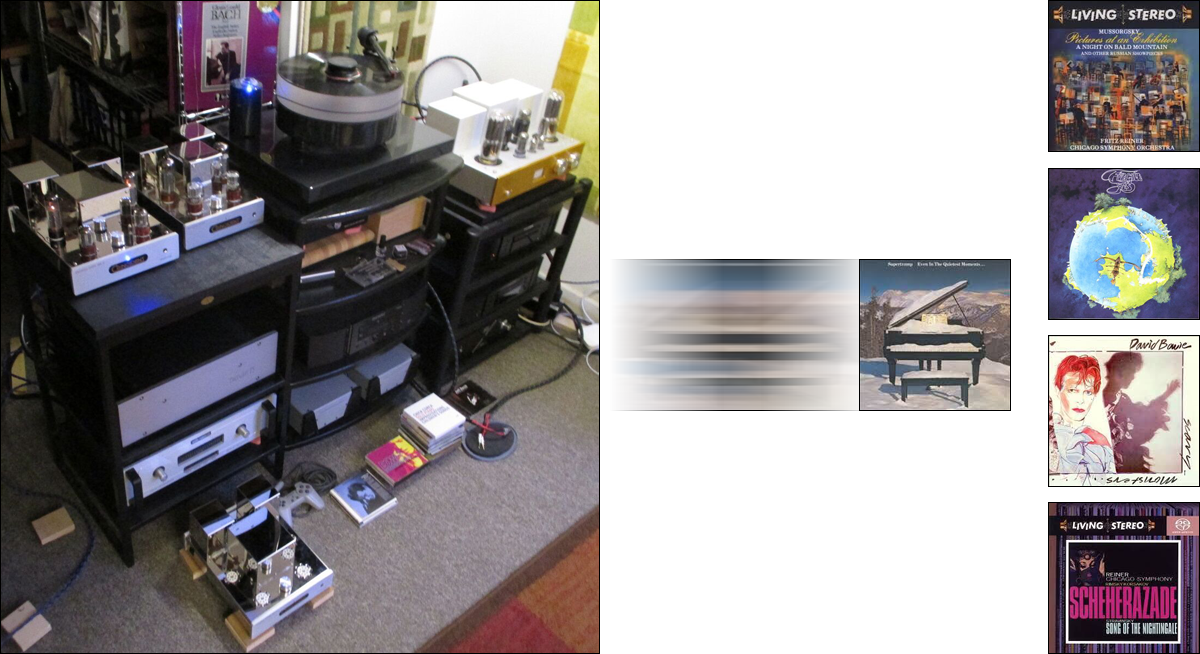
Alas the glass is more than half full as my 81-disc box set reminds me. Time and again the Dynamo MkII succeeds in coming darn close to larger SET amps like my Line Magnetic LM518ia in conveying the weight, radiance and sustain of Gould's piano. With it I certainly prefer the MkII. The extra iron imparts a greater sense of control over the lowest registers. With jazz guitar, one of my life's staple foods, I'm less sure. The MkII is less dense, less tonally saturated, more honest. Perhaps I can't handle the truth. There is less sugar more spice, more salt and pepper. With its trademark tube-induced holographic signature, the MkII never lets you forget that it's a valve amp, albeit a quiet and not so chunky one. The MkII is a more versatile amplifier than the MkI since it can control the woofers more than its little brother on demanding orchestral and rock music. And yet it seems to be no louder. Both amps can start to clip at 3pm on the dial though I never needed more than 12 to 1 o'clock to rattle the windows of my small room. A simple test with an admittedly crude iPad decibel counter reveals no greater output with the MkII. Eight watts are eight watts. Or are they?
One evening as I was doing an A/B on Jim Hall's Concierto LP, it dawned on me that I could use my Magnepan 1.7s as a blind test shield, a veil of ignorance as it were. My wife suggested I simply prop up the Gould box set and the book that comes with it, which is what I did to shield the blue LED's glow and the speaker cables from view. Out came George Benson's White Rabbit. Next was Lou Rawls' You'll Never Find Another Love Like Mine. My wife administered the test. The MkII won each time. It seemed faster. It seemed louder when both volume knobs were placed at noon. Guitars seemed sharper and better defined. Bass was tighter and drums and cymbals were snappier. Rawls' vocals were lovely with both amp. Neither could find a redeemable aspect to Benson's singing. This blind test lasted just two hours and is by no means scientific but the subjective results were clear. And the same was true at low volume levels. The MkI tasted great but was less filling. The MkII seemed complete. Subjectively it seemed louder—more filling—even if objectively, it wasn't necessarily so.
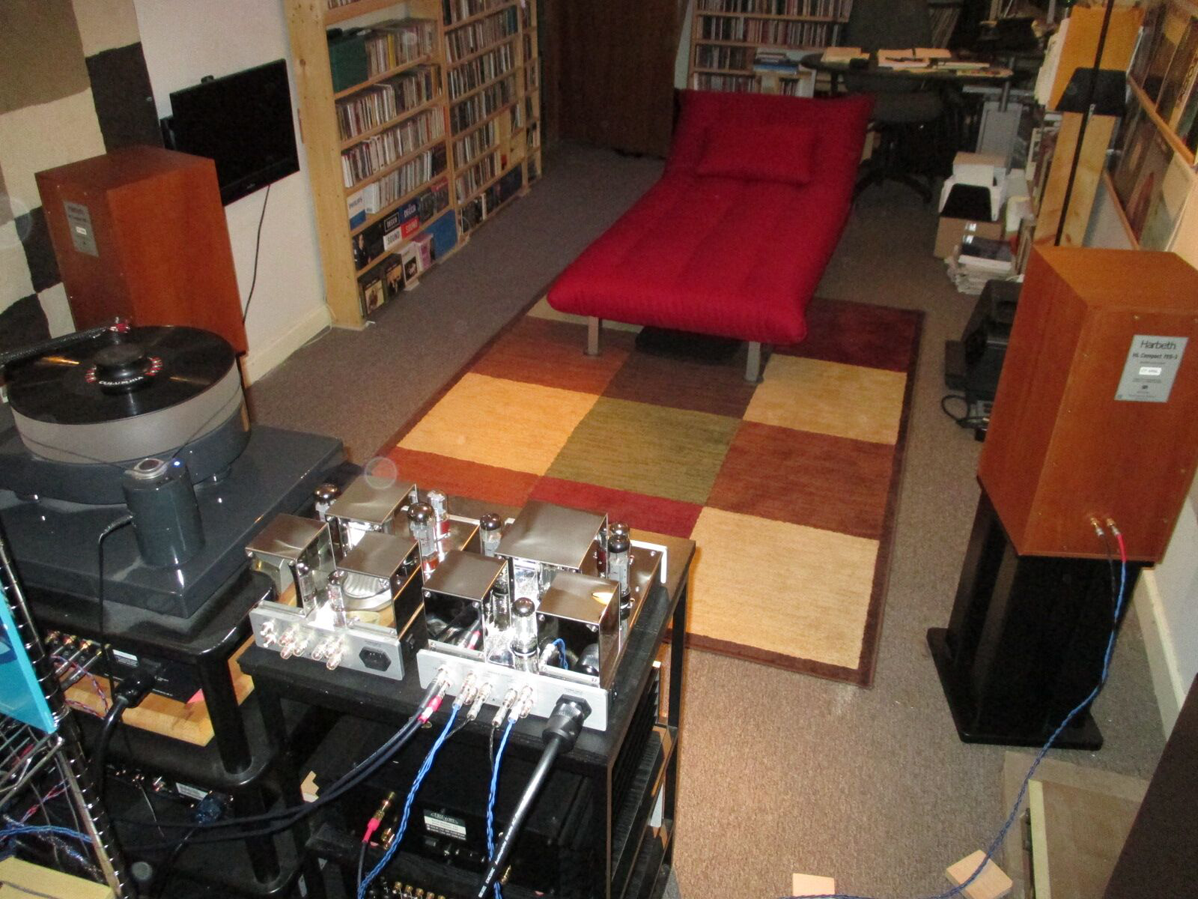
The conclusion of my listening sessions with the new Coincident Dynamo SE34 MkII coincided with the death of David Bowie. And so it was time to pull out a dozen old Bowie LPs and CDs to pay homage to this chameleon of an artist. Fittingly, my favorite Bowie track happens to be "Ashes to Ashes". All the money in the world cannot outdo the low-budget but surreal music video that accompanies this bizarre tune. Through the Dynamo MkI, this song was less shocking. With the MkII, the tune has got noticeably more bite when George Murray's bass slaps leap out from the speakers Tony Levin-style. The various layers of recording studio trickery are readily discernable. One must strain a bit with the MkI to notice them. Perhaps this is the wider bandwidth and lower noise floor. There's more ‘there' to the track, more complexity to ponder, more eeriness to the Roland guitar synthesizers. In a word, the MkII seems more accurate. But it's without a trace of solid-state stridency. That's what tubes are for and that's why I would never consider spending $1'500 on a new integrated solid-state amp. Nothing I know of at that price range can throw such a large soundstage. Compared with my ARC LS17/FirstWatt F5 setup ,there's more flesh with the Dynamo MkII and not a trace of the leanness I sometimes get with the F5. But, amazingly, the Dynamo comes reasonably close to the F5 in detail retrieval.
So what is the closest competition? There is no North American or European-made single-ended tube amp in this price range. Rogue's least expensive offerings begin at around $2'000 but are push-pull not single ended [Trafomatic from Serbia have a single-ended EL34 - Ed.] The closest rich-world product might be the offerings of Mastersound and Unison Research but they are even more expensive. Perhaps some of Icon Audio's products (designed in Britain, made in China) can compete. If you were willing to put in the labor, a nice Elekit at $750 would come close but then again no… the Elekit is decidedly polite and quaint in comparison, without the drive and power of this beast. If my sonic memory can be trusted, among the 40 odd push-pull and single-ended tube amps to have lodged in my house over the past eight years borrowed, reviewed or owned, Primaluna's Prologue amp is likely the closest competition. But it's an entirely different typology, push/pull with 32 to 42 watts of output depending on the tubes used. With its four inputs and ability to use everything from 6L6 to KT120, the Prologue is a far more versatile amp but it lacks that special magic which only single-ended amps can produce. This is why I have let two Primalunas visit and leave my house after a few months whereas the Dynamo remains. The Dynamo MkII will have a smaller potential market than the Prologue given the need for more careful speaker matching and given its single input. If you are willing to accept the Dynamo MkII's limitations, you'll be rewarded with magic.
When it rains, it pours. As I was concluding this review, I clicked on the New York Times to see that Glenn Frey was already gone at age 67. Out came my Eagles records and CDs. I always thought that Frey's best work was his early work. "Take it Easy" begins with a warm wall of lit-up guitars. Bernie Leadon's banjo is as discernable as I've ever heard it. Randy Meisner's bass is thumping along and it's speaking too loudly and too vaguely for my taste, like Paul McCartney's doped-up bass in the much celebrated Beatles' re-masters of a few years ago. "Lyin' Eyes" is ravishingly warm and detailed too. "I Can't Tell You Why" is brilliant. Frey's electric piano is complex and dimensional with the swirling effect you'd expect from a Fender Rhodes; Schmit's bass is massive but tighter than Meisner's earlier sound (especially with Gold Lion KT77); Walsh's guitar is richer and fuller than through the MkI. With most recordings, echo and reverb and recording studio ambience is more defined and the air surrounding Don Henley's vocals on "Witchy Woman" is something special, reminding me of Shelby Lynne's acclaimed "Just a Little Lovin'" SACD.
Speaking of which, the wider bandwidth of the Dynamo MkII makes for a better match with SACD. Feed this amp some magic and it will rise to the occasion. Fritz Reiner's Living Stereo recordings of Mussorgsky and Rimsky-Korsakov are among the best classical recordings of the twentieth century. It can be tiring to see them mentioned so often but this is the reason so many reviewers use these SACDs. In my small listening room, I did not want for a more powerful amp. The MkII had no trouble with these recordings. This is a nearly perfect amplifier for the price, for a small room. In my view the Dynamo MkII has two weaknesses. Unfortunately one of the tradeoffs associated with the surplus of output iron is a deficit of RCA inputs. You are still stuck with just one. There aren't too many $1'500 integrated amps sporting just one input. Almarro's smallest amp has two and so do most ChiFi amps in the $300 to $800 range. If Israel Blume ever introduces a Dynamo MkIII, I would place a second input at the very top of my wish list. Blume himself is a vinyl spinner and can surely relate to those of us who want our vinyl and polycarbonate, too.
My second gripe concerns the fit. The finish is smooth, sleek and fine. I am aware of no other North America-made tube amplifier that sounds this good for so little money. But I am aware of companies like Rogue who make similarly priced solid-state or hybrid amps whose fit seems a notch or two higher. But those amps don't have to contend with massive transformers attached to a small enclosure. My first Dynamo MkII arrived in an apparently damaged state since the top plate was sagging several millimeters at the back, unable to withstand the weight of the new heavier transformers. As it happens, Blume had sent me a prototype. Two months later the final production-quality version arrived complete with a new internal brace like a load-bearing wall to support the transformers. Problem solved. Only this time the central power transformer cover was not secured entirely parallel with the two smaller transformers. It's not noticeable unless one hovered directly over the amplifier where the stainless steel chassis make detailed photographs difficult but the lack of symmetry is clear. Was this a one-off case of misalignment? I have no way of knowing. This is an artisanal product, not a mass-produced one. I'm okay with that but you might not be. If you've ever seen some of Don Garber's Fi amplifiers, you know that sag happens especially with his X-shaped entry-level offering. The closest North American product that comes to mind is Audio by Van Alstine. To keep costs down, their lower-priced models have a similar artisanal look. In any case, if it's seamless fit you wish, look elsewhere.
You'll love the Dynamo for its personality though. Or, from a distance, you might gaze lovingly at this hunk of silver-like metal that gleams under the glow of thermionic tubes. At casa Smith, I've entered a Silver Age of sorts but fortunately for me. this influx of silver-colored amps occurred just before the debasement of my country's currency. Eighteen months ago. the Dynamo MkI was a fabulous bargain at $1'299 ($1'450 CAD). Today's $1'499 MkII is less of a bargain for Canadians who must pay the equivalent in greenbacks ($2'175 CAD). Australians and South Africans feel my pain as victims of the same forces which drive down currency values in commodities-exporting countries. One thing is for sure. For Americans and even Europeans with their relatively strong euro, this amp is one heck of a good value with few and perhaps no direct competitors. With the right speakers and music, this heavy little amplifier can compete with products priced three times higher.




![]()




![]()